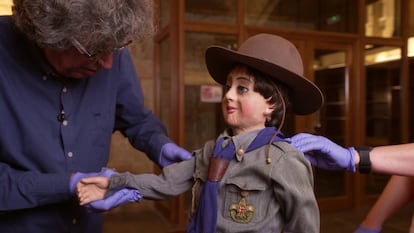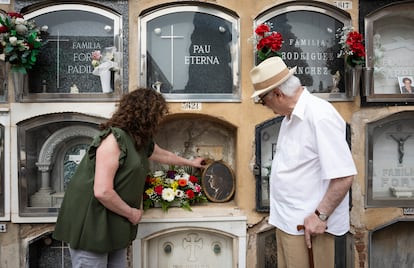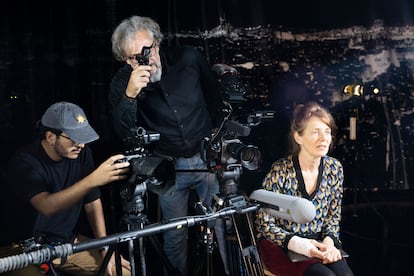One way to commemorate the first 100 years of radio is to tell how it was a technologically fragile invention, whose history in Spain begins in 1924 with In a few years, Ràdio Barcelona becomes a media outlet followed by an unthinkable number of listeners. And one of the first testimonies of this is the ability to mobilize people that Toresky (1869-1937) will have in his charity campaigns since Radio Barcelona. A popular character in the thirties whose adventure, today, few know. And it is his unusual biographical journey that the documentary narrates. Toresky: the prodigy of imagination. A title from Lacoproductora (from Grupo Prisa, publisher of this newspaper) that premieres on the CaixaForum+ platform on the 3rd. Its director is Cosima Dannoritzer, an award-winning German filmmaker, who has collaborated with different European television stations.
To construct the highly documented story about the unique life of Toresky, the stage name of Josep Torres i Vilata, the film uses testimonies from relatives who preserve his travel books (Montserrat Vilar and Jaume Francolí); writers like Marià Veloy, whose novel The world begins talks about the character; Elvira Lindo, creator of Manolito Gafotasa boy who spoke on the radio when he was 10 years old; historians of radio (Armand Balsebre, Rosa Franquet) or theater (Adolfo Ayuso); comedians (Juan Carlos Ortega, Andreu Buenafuente), radio professionals like Rosa Badia, who hosts the solidarity program No child without a toy from Ràdio Barcelona to collect toys for Three Kings’ Day; etc It is precisely Ortega who states the main questions that the documentary wants to answer: Who was he? Why did you leave Barcelona? What did you find at your destination? Why did an entire city come to his funeral? “We are beginning an exceptional journey, I promise you that this reality surpasses fiction,” says Ortega and… he is not exaggerating. As the film provides the answers, the astonishment and interest in his adventures grows.

Son of an established brass industrialist, the heir’s destiny was to continue his father’s business. Montserrat Vilar is rightly reminded of the drama of the artist son of The auca of Mr. Esteve (1907), by Santiago Rusiñol. More interested in theater and bohemian life, married with a son, when he is already in charge of the family business, in full decline, he decides to embark for America. He leaves his family, with whom he will not lose postal contact, and begins a new life in Cuba. An eventful life until he joins small companies as a singer and actor, where he survives financially.
It was a businessman who gave him the stage name Toresky, with Russian echoes, very fashionable at the time. What will change his life will be the discovery of the art of Fregoli, a popular transformist. He bribes one of Fregoli’s assistants to show him his tricked-out costumes that allow him lightning-fast outfit changes. Toresky, as a drag queen and ventriloquist, has had great success in South America. In 1913 he returned to Barcelona, where he cautiously tested for a family welcome and obtained it. After another tour of Asia, the First World War will advise him to return to his homeland.

In 1924 he signed on as the second announcer for Ràdio Barcelona. When the station director asks him to invent something to liven up the broadcast of five minutes of advertising by words, Toresky creates the endearing figure of the boy Miliu, who will always be eight years old. The documentary shows the authentic doll preserved in the Library of Catalonia. With Miliu he will do humor and successful charity campaigns. It will be precisely a joke that will indirectly cost him his life. In the middle of the civil war, during a broadcast, Miliu asks Toresky why there are bars in the prisons. And the answer is: “So that thieves do not enter.” This allusive political criticism did not please some. A militia group took him, no one knows where. After a few days they returned him home. A return that only served to cause him to die of apoplexy shortly after. “Scary,” says Jaume Francolí. His massive funeral was a citizen tribute to his figure and a demonstration of the popular impact that the radio already had. It was already a means of mass communication.
That May 1937, Toresky and… Miliu died. The documentary nimbly organizes the crossing of the different testimonies so that the story progresses vividly and uses abundant archival audiovisual material that, in certain cases, it would be convenient to identify. It is worth remembering who, as Ortega says, gave life to “a doll that moved an entire country.”

